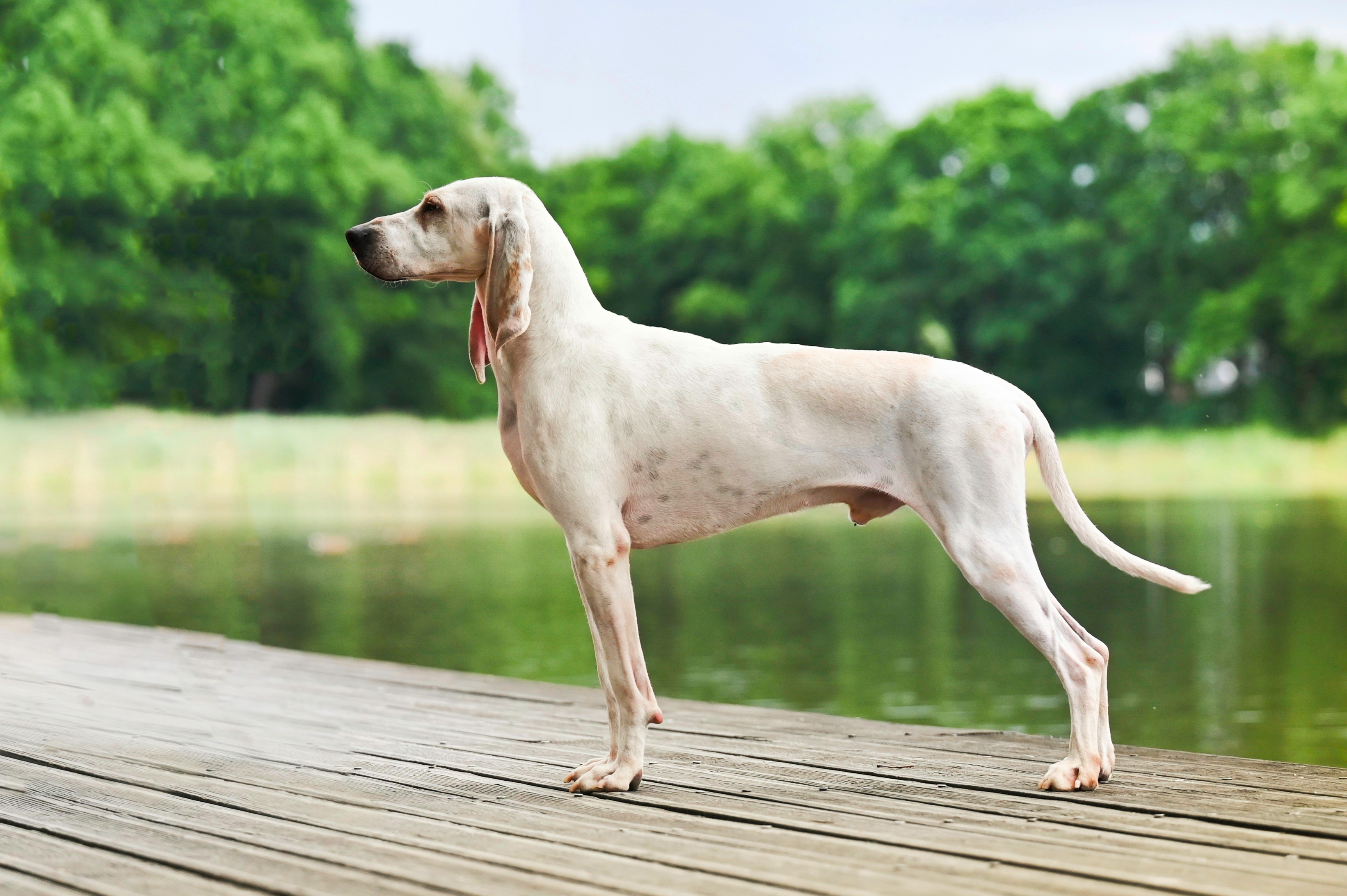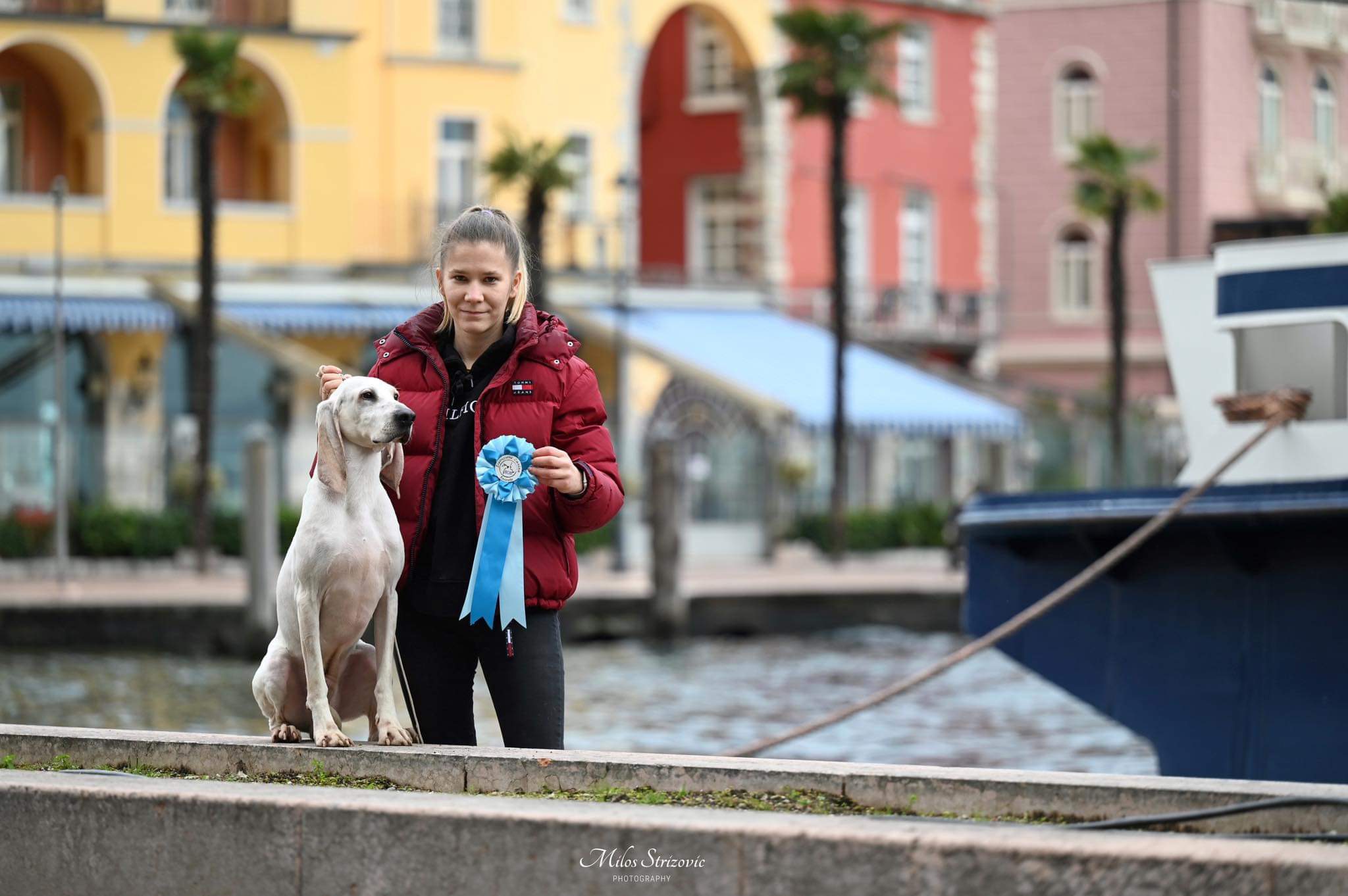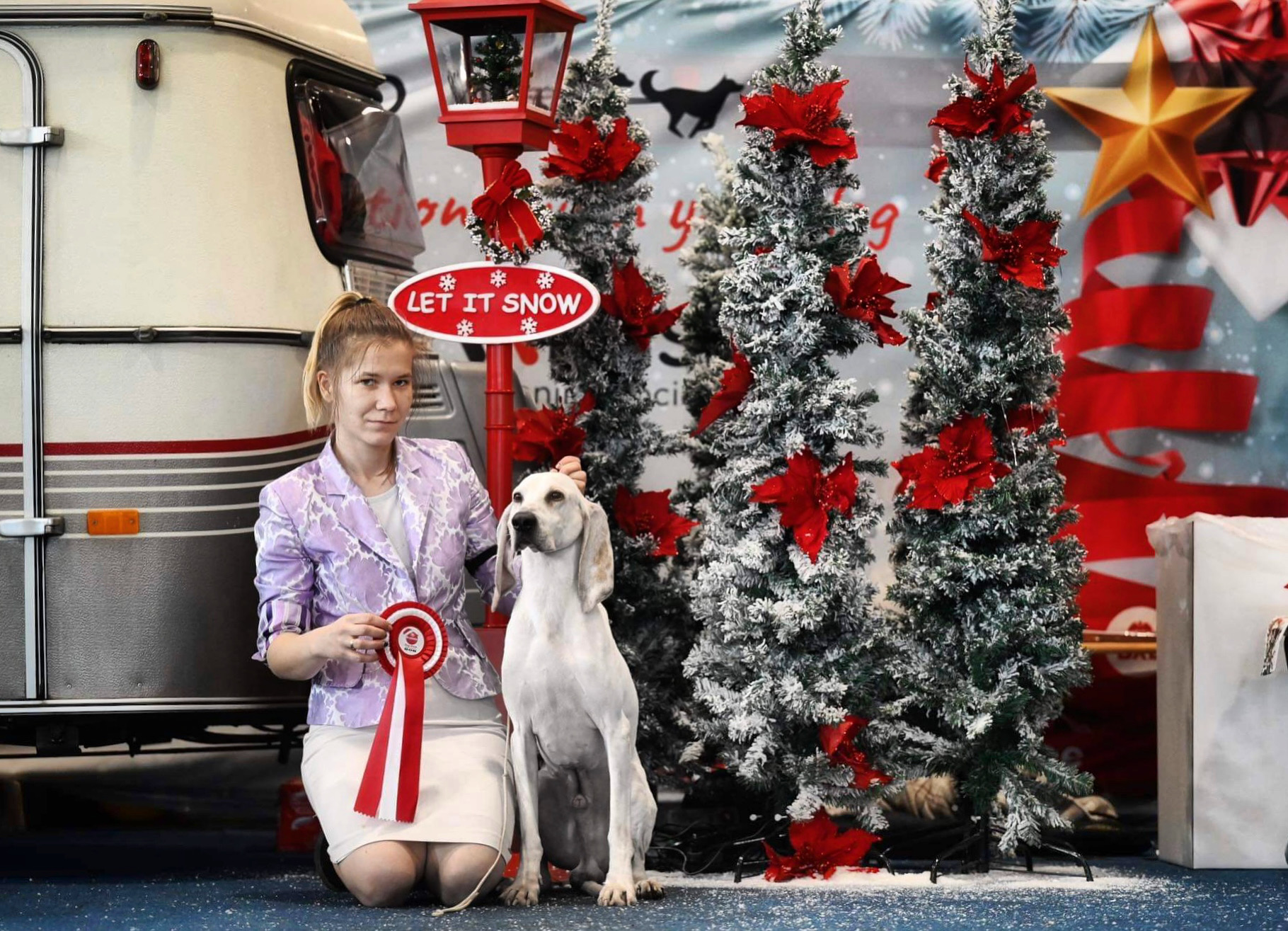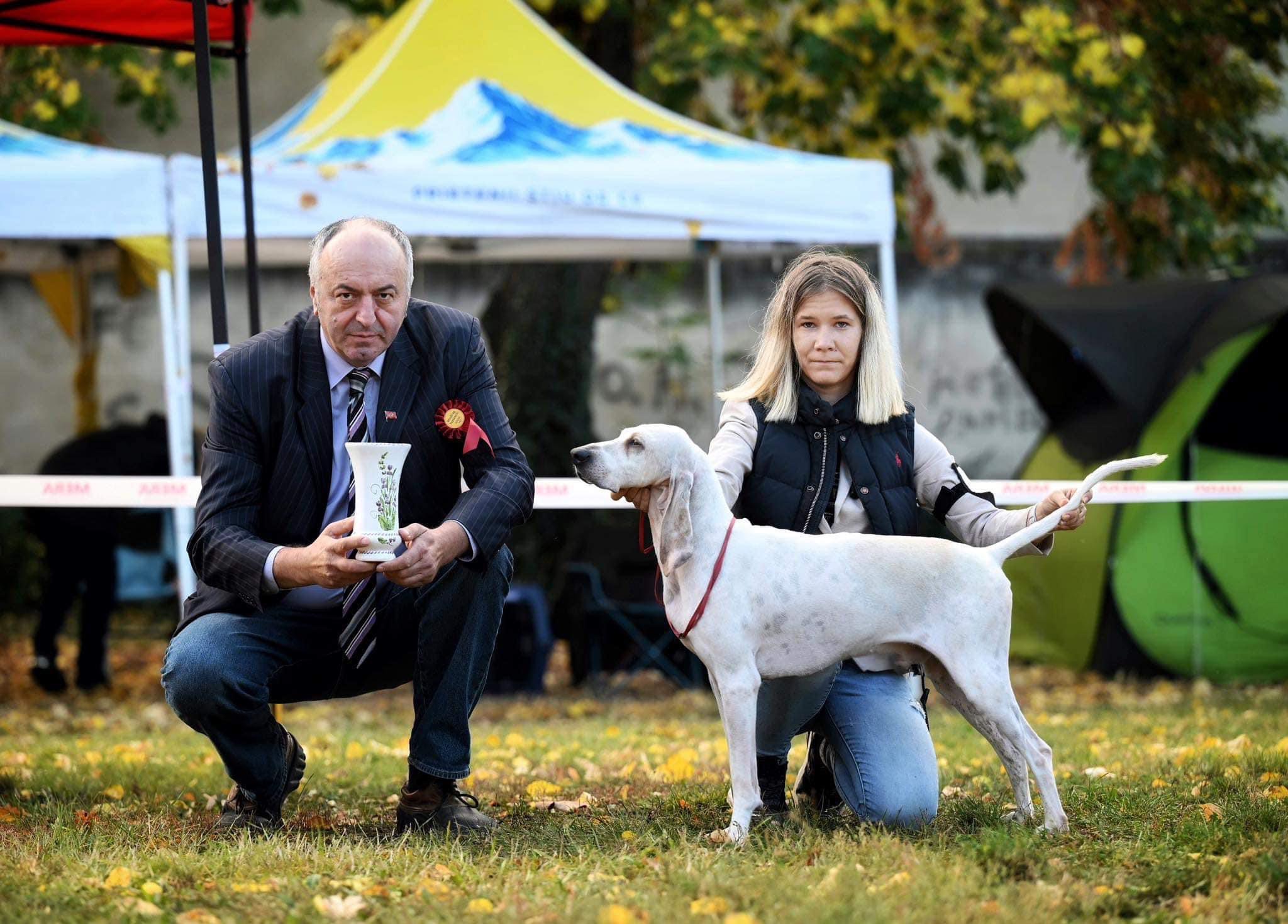Porcelaine Hounds

Porcelaine Hounds
The name of the breed was derived because of their white shiny coats, through which their skin, marbled with numerous black spots, is faintly visible - this effect is the same as with an object placed in between the fine translucent porcelaine and the source of light - the interplay of light and the materials opacity gives a unique and captivating visual effect.
Porcelaines' hair is short, their nose is well developed with very black, well opened nostrils, the eyes are round and very dark with an expression of intelligence and sweetness. Their ears should be very thin, settled slighlty below the line of their eyes, never above the eye line, long - reaching the end of the muzzle, set on narrow, rotated inward and pointed at the ends. A Porcelaine Hound's head is typically lean and finely sculptured, should be rather long - neither square nor pointed - with a rounded pear-shaped skull and the chamfer of a good length, giving the ear a relatively long appearance. The skull should be wide at the top between where the ears are set, flat with a median axis, the occiput must not be pronounced. The nasal bridge should be straight but ending with a slight arch. The stop should be marked but without exaggeration. Their neck is fairly long, light, showing a little dewlap of tense and lean appearance. The head is very French in type which means it should have a lightness especially soft tissues which should be marked but taut.
A Porcelaine's chest should be of an average width, but deep; their ribs being rather long without being flat. A Porcelaine's back should be broad and straight, withers well prominent, loins wide and very muscular, well coupled and not excessive in length. The croup should be slightly slanting, haunches placed well apart and slightly prominent. The underline should be full but slightly tucked up. The tail - well attached, fairly strong at the root, thinning at the tip and of an average length. The tail should be without any longer, coarser or slightly off-standing hairs. Porcelaine Hounds carry their tail slightly curved. Very characteristic for a Porcelaine is their shoulders which need to be constructed for a gallop, their natural movement - long, well sloping, well muscled without being heavy. Forefeet are very typical for a French hound with rather elongated and fine but tight toes and hard pads. The head and body combined as a whole must give an impression of speed.

Porcelaine Hounds
are medium sized dogs, according to the FCI breed standard - adult bitches should not exceed 56 cm (22.5”), adult males – 58.5 cm (23.5”). Their weight varies between 25-28 kg. Their gait is lively and gay, their gallop - light and tireless. Seeing them running in the fields is a real pleasure and brings feelings similar to studying a master piece of art.
Porcelaine Hounds are not only beautiful, but also of very good character - they are well-balanced, brave, and are very good companions in a family environment; they love the attention of people. We are very happy and proud to share our lives with them.
Welcome to the world of Porcelaines!

Porcelaine hounds kennel
It is hard to establish Porcelaines’ exact origin because the breed is very old and there is not much written information about their early years. The very first mention of these beautiful and distinguished hounds comes from 1600 in France where they were used to hunt; mostly hare and deer.
Unfortunately, the French Revolution had a hugely negative impact – decimating the breed as Porcelaine Hounds were associated mostly with hunting by the French aristocracy. At this point, monks from the Monastery in the French-Comté area played a very important role in saving Porcelaines from extinction, by reconstructing the breed from a very small population – hence the alternative name for Porcelaines, which is chien de Franche-Comté.
Years of revival of the breed have now brought us a stable population with a good number of specimens. As the breed was successfully reconstructed, The Porcelaine Club (Club du Porcelaine) was established in 1971 in France, where the largest population of Porcelaines can be found. The breed, still very rare in the rest of the world, has also become popular in Italy and nowadays Porcelaine Hound breeders are appearing in some other European countries and the U.S.A.
Please visit also our Instagram profile where we post many of pictures of our dogs and our life with them
Our Instagram profile
as well as our Facebook Page
Our Facebook Page
FCI Porcelaine Hound Standard













